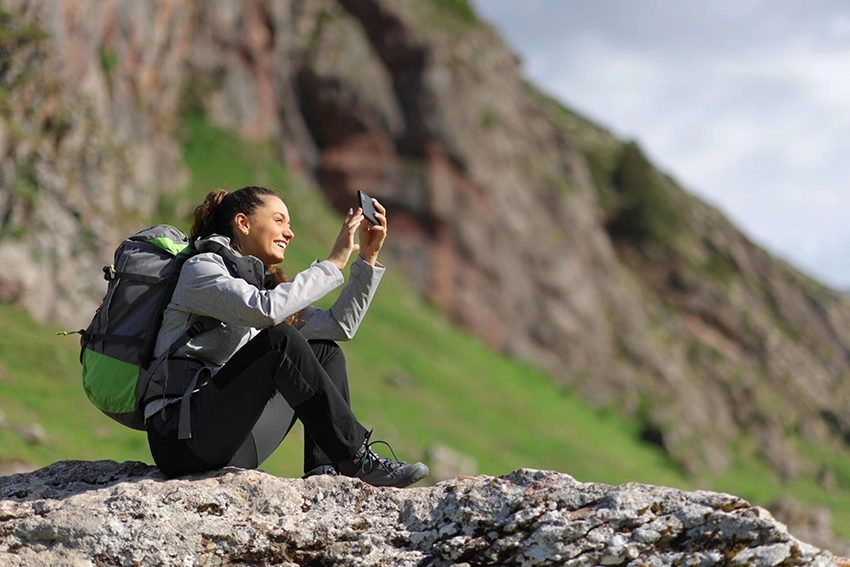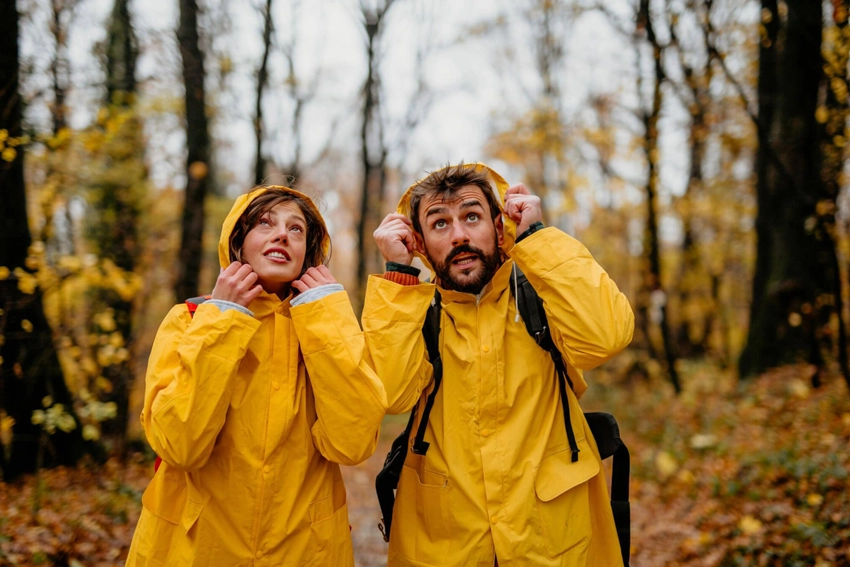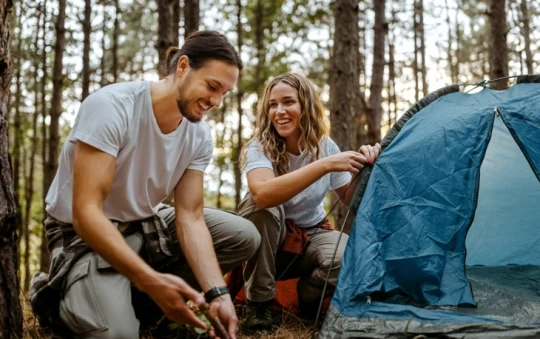Venturing into the world of backpacking unlocks a realm of stunning natural beauty and thrilling experiences. But to fully enjoy this adventure, mastering a core set of skills is essential for every backpacker.
This guide is designed to introduce you to the key fundamentals that will make your backpacking trips successful. These skills are your toolkit for navigating new terrains, setting up a safe and comfortable camp, and ensuring you stay well-fed and hydrated. Whether you’re an experienced hiker or just starting out, these basics are crucial for your safety and for making the most of your outdoor adventures.
We’ll cover everything from effective navigation and campsite setup to managing your gear and staying prepared for emergencies. By honing these skills, you’ll be ready to embrace the challenges of the trail and deepen your connection with nature.
So, let’s embark on this exciting journey together and discover the incredible joys of the great outdoors!
Navigation Skills
Mastering navigation skills is key to a successful and enjoyable backpacking adventure. It empowers you to explore diverse terrains with confidence and reach your destinations safely. Whether you’re trekking through remote paths or delving into uncharted wilderness, honing these skills is essential for both safety and peace of mind.
Understanding Maps:
Learning to read topographic maps is a must for any backpacker. These maps offer crucial insights into the landscape, such as elevation changes, water sources, and landmarks. By grasping contour lines, symbols, and scales, you can accurately measure distances and plan your route with precision.
Using a Compass:
Even with modern GPS technology, a trusty compass remains an essential tool for wilderness navigation, especially where satellite signals are weak. Get comfortable with basic compass techniques, like taking bearings, orienting your map, and aligning the compass with map features.
Leveraging GPS Technology:
GPS devices can be a game-changer on tricky terrains. Learn how to set waypoints, track your route, and use breadcrumb trails to retrace your steps. Still, always keep a paper map and compass as backups in case your device fails or the battery runs out.
Orientation:
Before you set off, take a moment to get to know your surroundings. Identify major landmarks, understand the layout of key features like rivers or mountain ranges, and mentally map out the area. Pay attention to trail signs, junctions, and natural cues to stay on track.
Preparation:
Thorough preparation is crucial for a smooth backpacking trip. Research your route carefully, considering trail conditions, potential hazards, and water sources. Have backup plans ready and inform someone of your itinerary before you head out.
By refining your navigation skills and practicing regularly, you’ll build the confidence to safely explore new trails and wilderness areas. Remember, navigation is not just about finding your way—it’s about fully experiencing and enjoying the beauty of nature.
Setting Up Shelter and Campsites for Backpacking
Choosing the perfect campsite and setting up your shelter are crucial skills for a rewarding backpacking experience. A well-chosen site provides comfort, protection from the elements, and helps minimize your impact on the environment. Here’s how to make the most of your campsite and shelter setup:
Selecting the Campsite:
Find a flat, well-drained spot away from potential hazards like dead trees or uneven ground. Take into account your proximity to water sources, the direction of prevailing winds, and how much sunlight the area receives. Whenever possible, opt for established campsites to adhere to Leave No Trace principles and minimize your environmental footprint.
Types of Shelters:
You have several shelter options to choose from, including tents, hammocks, tarps, and bivy sacks. Each type offers different benefits and drawbacks depending on weight, weather conditions, and personal preference. Practice setting up your chosen shelter before your trip so you can assemble it quickly and efficiently in the field.
Setting Up Your Shelter:
Proper setup is key to comfort and protection. For tents, follow the manufacturer’s instructions to ensure a secure and stable pitch. Stake down all corners and guylines. For hammocks or tarps, consider the angle and tree spacing to ensure stability and comfort.
Organizing the Campsite:
Keep your campsite organized to enhance efficiency and minimize your impact. Create designated areas for cooking, dining, resting, and gear storage. Use bear-proof containers to store food and make sure to pack out all waste before you leave.
Leave No Trace Principles:
Embrace Leave No Trace principles to safeguard wilderness areas. Properly dispose of waste, minimize the impact of campfires, and respect local wildlife. Strive to leave your campsite cleaner than you found it to preserve the area for future visitors.
By mastering campsite selection and shelter setup, you’ll ensure a safe and enjoyable backpacking adventure. Remember, environmental stewardship is key to preserving the beauty of the outdoors for generations to come.
Food and Water Management

Managing your food and water effectively is crucial for staying energized and hydrated while backpacking. Properly handling these essential resources ensures you can enjoy your adventure without compromising your well-being. Here’s how to stay on top of your hydration and meal prep:
Hydrating Properly:
Keeping hydrated is vital, especially in hot and dry conditions. Make sure you carry enough water or know where reliable sources are along your route. Plan your water intake carefully based on your activity level, the weather, and the terrain to stay hydrated throughout your hike.
Purifying Water:
To avoid waterborne illnesses, always treat water from natural sources. Portable filters, chemical purifiers, or UV devices are great tools for making sure your water is safe to drink. Be sure to follow the instructions for any water treatment method you use to ensure it’s done correctly.
Meal Planning:
Good meal planning can make or break your trip. Choose lightweight, non-perishable foods that pack a nutritional punch, like dehydrated meals, nuts, dried fruits, and energy bars. Think about the weight, size, and prep time of your food to ensure it fits your needs and makes your journey enjoyable.
Storing Food Safely:
Proper food storage is key to avoiding wildlife encounters and reducing your environmental impact. Use bear-resistant containers or hang your food out of reach in bear-prone areas. Keep your food and trash away from your campsite to discourage wildlife from visiting.
Managing Waste:
Follow Leave No Trace principles by minimizing food waste and disposing of all scraps and packaging responsibly. Carry out everything you bring in, including wrappers and food scraps. Avoid burying or burning waste as this can attract wildlife and disrupt local ecosystems.
By mastering food and water management, you’ll maintain the energy and hydration needed for a successful and enjoyable backpacking adventure.
Safety and Emergency Preparedness
Ensuring you’re prepared for emergencies and keeping safety top of mind is crucial for any backpacking adventure. It’s all about being ready for whatever comes your way, so you can tackle challenges with confidence. Here’s how to gear up and stay safe on the trail:
First Aid Kit:
Pack a well-stocked first aid kit to handle those unexpected bumps and scrapes. Your kit should include essentials like bandages, antiseptic wipes, adhesive tape, pain relievers, and blister treatments. These basics can be a lifesaver when dealing with minor injuries.
Emergency Shelter:
Always carry a lightweight emergency shelter—think space blankets, bivy sacks, or compact tents. This can be a game-changer if you find yourself caught in bad weather or need an unplanned overnight stay. Opt for something durable, weather-resistant, and easy to set up.
Communication Devices:
Don’t leave home without communication tools such as a cell phone, satellite phone, two-way radio, or a personal locator beacon (PLB). Ensure these devices are fully charged and have good signal coverage for the areas you’ll be exploring. They’re your lifeline if you need help.
Navigation Tools:
Bring along reliable navigation tools like a map, compass, or GPS device. Mastering basic navigation techniques—reading maps, using a compass, and operating your GPS—will help you confidently find your way through any terrain.
Emergency Protocol:
Create a clear emergency protocol for different scenarios like injuries, getting lost, or severe weather. Before you head out, share your itinerary and emergency plan with a trusted friend or family member and set up regular check-ins. This way, someone knows where you are and can help if things go awry.
Leave No Trace:
Commit to Leave No Trace principles to minimize your impact on the environment. Keep your campsite clean, pack out all your trash, and be considerate of wildlife and fragile ecosystems.
By staying prepared and informed, you’ll be ready to handle whatever the wilderness throws your way and enjoy your adventure to the fullest. Safe travels and happy hiking!
In Conclusion
May your backpacking journeys be filled with breathtaking moments and unforgettable experiences as you master the art of outdoor adventure. With sharp navigation skills, you’ll navigate diverse terrains with confidence and ease, leading you smoothly to your destinations. Setting up your shelter and campsite with care will ensure you find comfort and protection no matter what the weather brings. By managing your food and water resources wisely, you’ll keep your energy levels high and your spirits even higher.
Always remember to embrace Leave No Trace principles—pack out all waste and leave your campsites as pristine as you found them to preserve the beauty of nature. Approach each adventure with a sense of curiosity, humility, and deep respect for the environment, whether you’re embarking on a brief escape or a lengthy trek. Each step in the wilderness is an opportunity for personal growth, exploration, and a profound bond with the natural world.
As you set out into the great outdoors, find peace in the rhythm of your steps, let the stunning landscapes inspire you, and revel in the satisfaction of overcoming challenges. Equip yourself with efficient cooking gear for easy meal preparation on the trail, and maintain a spirit of wonder for the magnificence around you. Safe travels, and may your adventures be filled with lasting memories and a deep appreciation for nature’s wonders.





